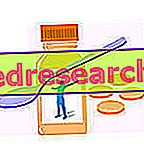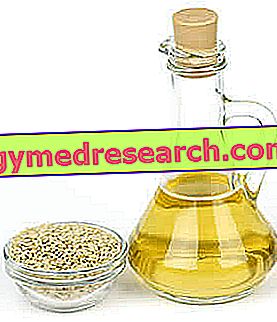
The fight against hunger is a battle lost at the start because if the diet is too restrictive some occasional and inevitable binge will be enough to frustrate every sacrifice.
So be careful not to confuse the need for food with the desire for food. The dessert at the end of a meal is a classic example of a craving for food, because at that point usually enough calories have already been taken. In these cases the need for food is only psychological, not physical.
Being able to control your appetite allows you to keep the temptations of good food in check.
To keep hunger pangs at bay it is necessary to search for foods with a higher satiety index and to distribute them rationally throughout the day. The choice of what we eat is in fact influenced by sensory and psychological aspects but also by the index of satiety of food.
The index of satiety or satiating power of a food
The satiating power of a food is influenced by many factors. Among these there are some purely subjective, such as appearance and palatability and other objective ones such as macronutrient composition (fats, lipids, proteins, volume and content in water and fiber).
SUBJECTIVE FACTORS:
the palatability and appearance of a food are very important factors: is it easier to consume 500 grams of your favorite food, served in a porcelain dish or take 50 grams of a repulsive food served in a plastic dish?
Needless to self-compel yourself to take a food that is not very desirable to us, since we will probably assume even less than expected but soon we will find ourselves hungry and with a psychological remorse that will lead us to empty the refrigerator.
Satiety is a neurological response controlled by specific regions of the hypothalamus. The subtle balance between the different hormones that regulate this sensation can be altered by genetic factors and in these cases the subject will be more or less predisposed to eat more.
Other factors such as stomach volume and the quantity and quality of gastric juices are also able to influence the sense of fullness.
OBJECTIVE FACTORS
Beyond the subjective factors, there are numerous other objective factors that can be controlled with a correct diet:
Amount of protein
According to some studies by the University of Washington, proteins are a very useful ingredient to suppress appetite and promote a sense of satiety.
The success that hyper-protein diets have encountered in recent years is undoubtedly also due to this important aspect. In addition to delaying the onset of hunger, proteins counteract the reduction in lean mass and basal metabolism that occur following normal weight-loss diets.
In addition to satisfying more carbohydrates and fats, proteins also have a greater thermogenic power because their digestion requires a higher energy quantity than the other two macronutrients
However diets with high protein intake are not completely immune to risks and negative aspects, see: Excess protein in the diet
Quality of carbohydrates
The type of carbohydrates taken with food directly affects the sense of satiety. The glycemic index is the main cause of this characteristic: the lower the glycemic index is and the greater the sense of satiety of that particular carbohydrate will be. To learn more about this, see: Index and glycemic load
HIGH INDEX FOODS: glucose, honey, white bread, cereal potatoes, crackers, breakfast cereals, banana grapes, CARROTS, rice.
FOOD A MODERATE INDEX: wholemeal bread, pasta, corn, oranges, whole grains for breakfast, polished rice.
LOW-INDEX FOODS: fructose, yogurt, peas, apples, peaches, beans, nuts, parboiled rice, milk.
Volume of food
The volume of food ingested is a factor that considerably influences the sense of satiety.
During swallowing the throat sends a signal to the stomach, which prepares to receive the bolus by expanding. As the volume of food present in the gastric sac increases, impulses are sent to the brain, causing the appearance of satiety.
The greater the volume of food, the faster the state of gastric fullness. A large but low-calorie food generally contains a high amount of water and fiber and a reduced percentage of fat. Examples are the orange and yogurt.
A food rich in calories but low in volume generally contains a reduced amount of water and fiber and a high percentage of fat. Examples are dried fruit and seasoning fats.
Eating foods rich in water and fiber such as fruit and vegetables, skimmed milk and the like, promotes the premature appearance of satiety. On the contrary, particularly fat-rich foods determined a lower sense of fullness.
Chewing
Reappropriation of the correct chewing technique is very important especially in the presence of "impulsive" hunger. By chewing slowly digestion is facilitated, the organoleptic characteristics of foods are more appreciated and irrational binges are avoided.
In order for the first signs of satiety to arrive at the brain, about twenty minutes must pass from the moment you start eating. Chewing slowly can therefore help to curb unnecessary excess food.



